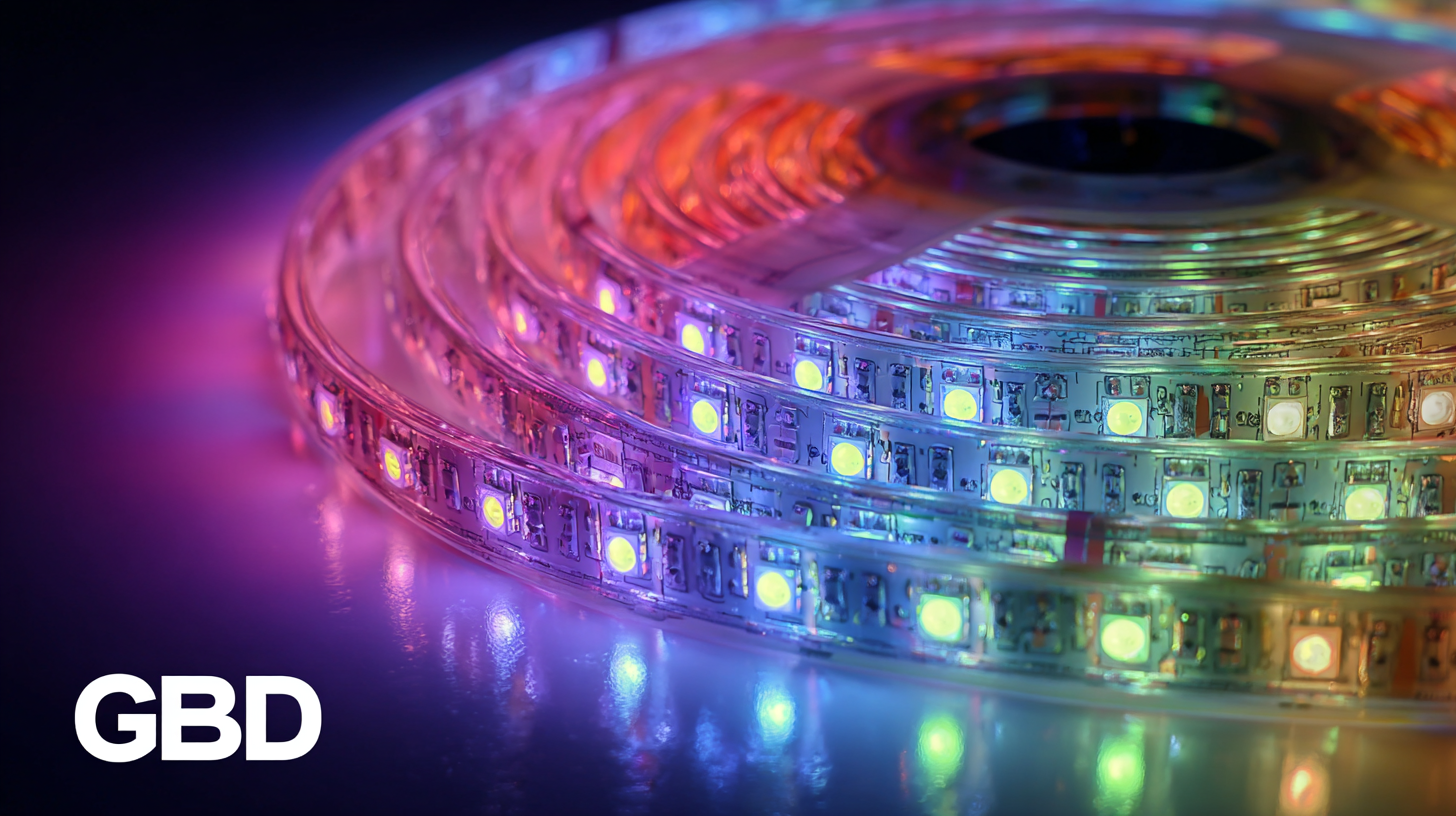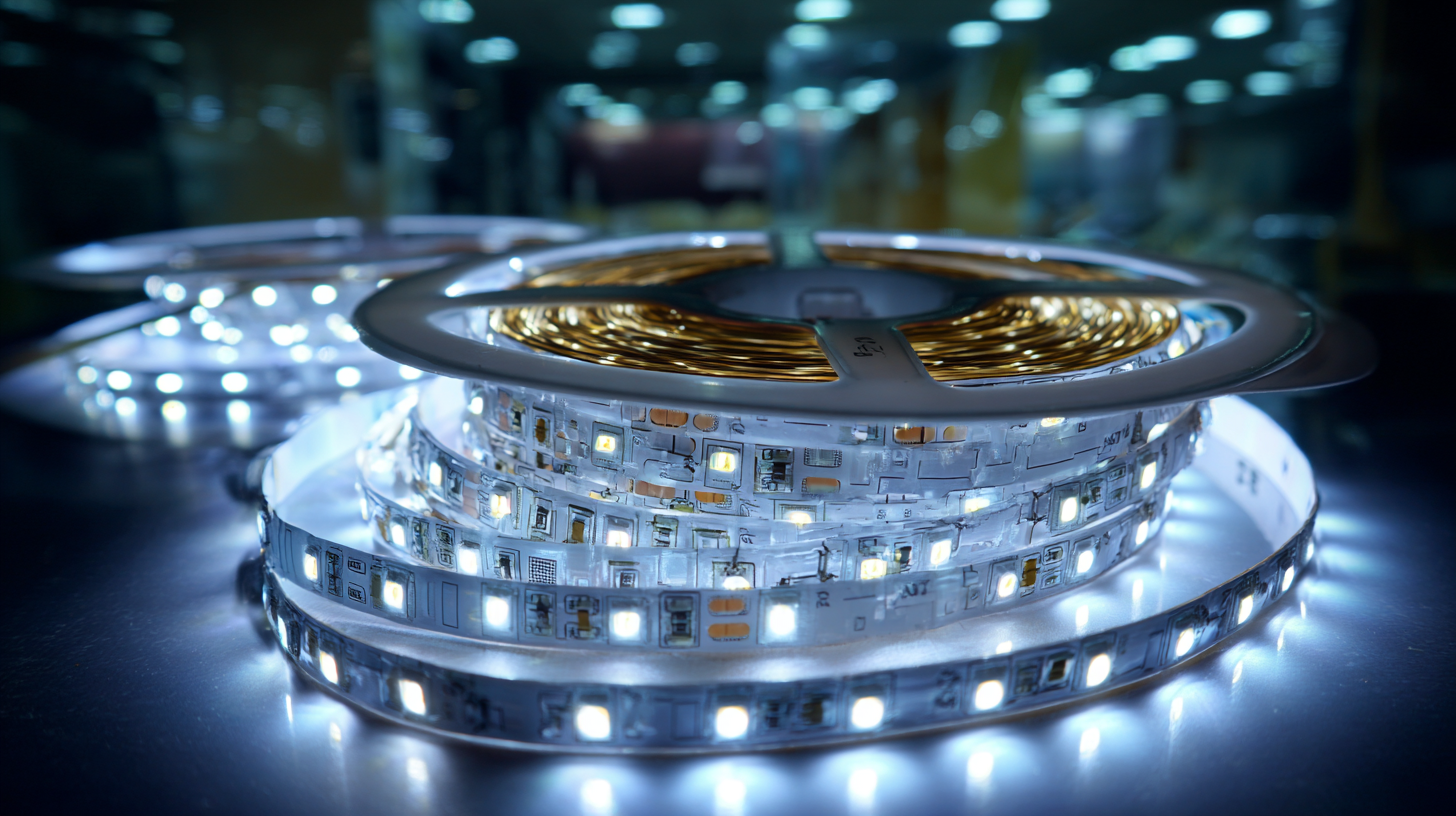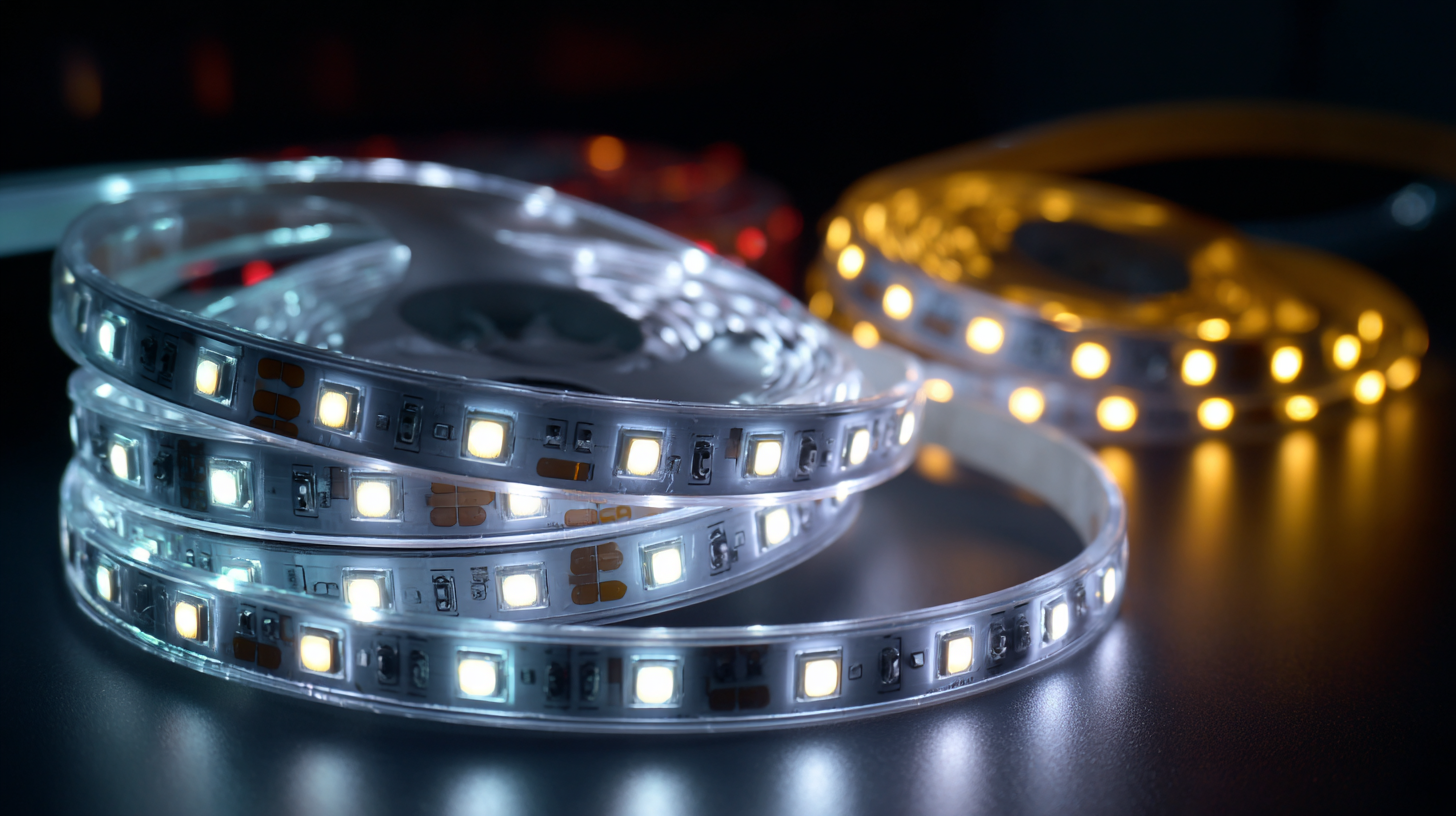

As the demand for versatile and energy-efficient lighting solutions continues to rise, LED Strip Lights have emerged as a preferred choice for a variety of global projects across different sectors. According to a recent industry report by ResearchAndMarkets, the global LED lighting market is projected to grow at a significant rate, reaching an estimated value of $105 billion by 2025. This surge is largely attributed to the increasing adoption of LED technology, known for its longevity and reduced energy consumption compared to traditional lighting options. In this context, selecting the right LED Strip Light becomes crucial for achieving optimal performance and aesthetic appeal in both residential and commercial applications. With a myriad of options available, discerning the best LED Strip Light for your specific needs requires a nuanced understanding of product specifications, installation requirements, and overall compatibility with existing designs.

When selecting the best LED strip lights for your global project, understanding the key specifications is crucial. The first aspect to consider is the lumens output, which indicates the brightness of the strip lights. Depending on the intended use—be it for ambient lighting, task lighting, or decorative purposes—different lumen levels will be suitable. For instance, if you’re illuminating a workspace, look for LED strips that provide a higher lumens per foot to ensure adequate visibility.
Another important specification is the color temperature, measured in Kelvin (K). If your project aims for a warm, inviting atmosphere, opt for LED strips in the 2700K to 3000K range. Conversely, cooler temperatures around 5000K to 6500K might be preferred for a more modern, crisp environment. Moreover, the IP rating is critical if the lights will be used in humid or outdoor settings. An IP65 or higher rating ensures the strips are water-resistant, making them suitable for versatile applications regardless of the environment. Always evaluate these specifications in relation to your project’s specific needs for optimal results.
When selecting LED strip lights for global projects, evaluating manufacturing quality is paramount, particularly when considering suppliers from China. The country has positioned itself as a leading manufacturer in the electronics sector, driven by its robust investment-led growth model. This economic framework has not only supported rapid industrial expansion but has also sparked significant advancements in technological capabilities. As major corporations increasingly look to outsource production, understanding what sets Chinese manufacturers apart becomes essential.
One key factor in China's manufacturing prowess is the emphasis on high-quality development. Recent environmental regulations have compelled manufacturers to enhance their processes, leading to improved capacity utilization and product quality. Evaluating these criteria is crucial for international companies, especially as they consider partnerships with factories that meet stringent global standards. As we witness Samsung’s exploration of third-party manufacturers like MTC, it underscores the importance of partnering with companies committed to both innovation and adherence to increasingly rigorous production requirements. This trend highlights a broader shift in the industry towards prioritizing quality alongside cost-effectiveness in manufacturing.
When selecting LED strip lights for your global projects, understanding the comparative features and market dynamics of different types is crucial. The global LED lighting market was valued at approximately USD 70.94 billion in 2023 and is expected to grow significantly, reaching USD 187.45 billion by 2032. This expansion is driven by a greater emphasis on energy efficiency and the versatility of LED lighting solutions, particularly in commercial sectors.
In the commercial LED strip light segment alone, the market is projected to increase from USD 3.1 billion in 2025 to USD 4.8 billion by 2034, with a compound annual growth rate (CAGR) of 6.5%. This trend illustrates the growing recognition of LED strip lights as an effective way to enhance energy efficiency and provide design flexibility in a variety of applications. As the lighting industry's landscape continues to evolve, incorporating advanced technologies and options such as linear LED strip fixtures can significantly impact project outcomes. The global linear LED strip fixture market is anticipated to rise from USD 2.13 billion in 2022 to USD 4.97 billion by 2030, reflecting the upward trend in demand and innovation in this space.

When it comes to lighting solutions for global projects, LED strip lights stand out for their remarkable energy efficiency and longevity compared to traditional options. The modern world is increasingly moving towards sustainability, and LED technology aligns perfectly with this vision. These lights consume significantly less power—up to 75% less energy than incandescent bulbs—while delivering the same, if not superior, brightness. This reduced energy consumption not only helps in minimizing operational costs but also plays a crucial role in lowering carbon footprints, making LED strip lights an environmentally responsible choice.
Furthermore, the longevity of LED strip lights is a game-changer in maintenance and replacement costs. With a lifespan that can exceed 50,000 hours, these lights far outlast traditional bulbs, which often require frequent replacement. This durability ensures that global projects can maintain consistent lighting without the hassle and expense of regular upkeep. By choosing LED strip lights, project managers can enjoy a seamless blend of efficiency and reliability, facilitating smoother operations in diverse settings, from architectural installations to entertainment venues.
| Feature | LED Strip Lights | Traditional Lighting |
|---|---|---|
| Energy Efficiency | Up to 80% less energy consumption | Higher energy consumption |
| Lifespan | 25,000 - 50,000 hours | 1,000 - 2,000 hours |
| Heat Emission | Minimal heat output | High heat output |
| Brightness | Up to 2000 lumens per meter | 500 - 1500 lumens |
| Color Options | RGB and tunable white | Limited color options |
| Dimming Capability | Yes, compatible with dimmers | Not always compatible |
When embarking on global projects that incorporate LED strip lighting, balancing cost-effectiveness with quality is crucial. The first step is to thoroughly research the available options. Look for reputable suppliers who offer warranties and customer support. This will ultimately save you from costly replacements and ensure a reliable lighting solution. Comparing prices is essential, but make sure to assess the specifications and user reviews to avoid compromising on quality.
Tip: Set a clear budget before starting your project. Determine how much you are willing to allocate for the LED strip lights and stick to it. This helps narrow down your options and ensures that you don't overspend. Additionally, consider the long-term savings on energy consumption that high-quality LED lights provide.
Another helpful tip is to factor in installation costs. Some LED strips may be more affordable upfront but could require specialized installation that raises overall expenses. Investing in quality products that are easy to install can significantly cut down on labor costs and make your project more cost-effective.
